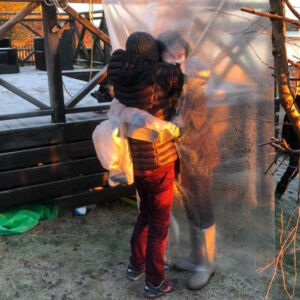If someone had told me a year ago that I would not be able to hug my parents for over a year, that there would be heated debates about whether my kids schooling should be moved online or not, and that all international conferences would be cancelled for at least 18 months, I would have thought they were insane.
Even if 2020 have been exceptional, the future is always full of surprises. I remember when I in my 1970’s childhood watched the Swedish TV show, “A till Ö”. The main character, Hedvig, had a picture-phone where you could see the person you spoke with, such an implausible idea for me. Now my 11-year-old daughter has regular FaceTime cook-alongs with her friends. One day they even had a shoe-cleaning hang out; 4 friends, each in their house, trying to help each other get their white sneakers to be white again. It involved toothpaste, and a substantial mess. But that is another story.
In Mistra Food Futures WP 3, we will explore the future of the Swedish Food system in a set of alternative storylines leading up to the year 2045. At least one of the scenarios will look at an “official future”, where we analyze current policy documents and see how closely they can help us get to targets set for the year 2045. The targets will be identified by researchers in WP 2, and includes aspects such level climate impact, biodiversity, land use, population and public health.
Another set of scenarios will start with the year 2045, and the assumption that the targets are met, and then look at alternative pathways that could get us there. In developing these scenarios, we will need to deal with biophysical, social and technological changes, and how they interact. We will also look at how change happens in Sweden itself, as well as global changes that has implications for example for Swedish farmers, food producers, retailers, restaurants, and public meals.
A main reason for doing scenario development in Mistra Food Futures is to help systematically analyze the uncertainties we hold about the future, in light of the decisions we must make today, hopefully making the decisions more thought through and resilient. How can we make sure a sustainable food system transformation doesn’t render the food system more vulnerable to the next pandemic-like global surprise? How can we make sure food system actors can take up new technological and behavioral advances, such as the new digital infrastructure, in ways that are socially and ecologically just and resilient?
The scenarios we will develop are not intended to predict the future, but to make people more aware of possibilities and therefore both opportunities and risks the future may hold. Some of the alternative pathways will be modelled and give us better ideas of quantitative changes that we may anticipate. Others will be just stories, which are internally consistent that expands the basis of what can be considered as plausible possibilities of food system changes.
We are just starting to develop this work in WP3. But if you are interested in reading about recent Swedish scenario work, I recommend you to look at a paper led by My Sellberg at Stockholm Resilience Centre about a food future for the Lake Mälaren region. In that paper we used bottom-up, participatory narrative scenarios, a method that was developed in the international project “Bright Spots: Seeds of the Good Anthropocene”. To develop the scenario we brought together a diverse set of regional actors, developed a vision of a positive food future, and identified conflicts and opportunities for moving towards it. The vision represents a significant change from the current situation, and where the direction of change aligns with global goals of sustainable and healthy diets, and promotes increased diversity in crops and landscapes that could strengthen the resilience of regional food systems.
I look forward to discussion the future of food with all of you in the Mistra Food Futures program.
/Line
 By the way, I did get to hug my parents at Christmas. My daughter bought a big piece of plastic and taped together a plastic sheet with arms from both sides. We hang it up in the garden and had a big hugging party. Until we get the vaccines, I am deeply grateful for my daughter’s low-tech innovation.
By the way, I did get to hug my parents at Christmas. My daughter bought a big piece of plastic and taped together a plastic sheet with arms from both sides. We hang it up in the garden and had a big hugging party. Until we get the vaccines, I am deeply grateful for my daughter’s low-tech innovation.